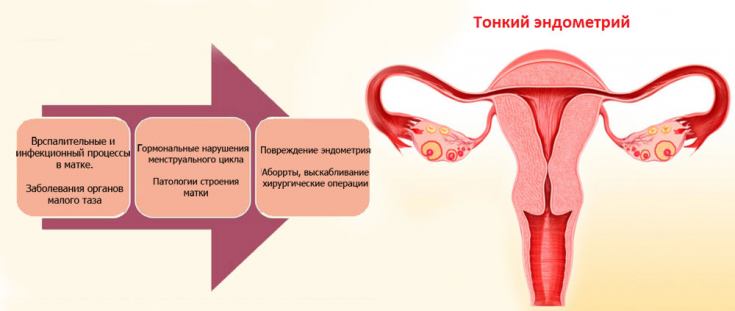Hormonal Acne - those pesky, painful, and nasty pimples that pop up at the worst of times (read: right before a long-awaited vacation or before your sister's wedding). Shouldn't you have gotten rid of acne as a teenager?
Unfortunately not - especially if you're struggling with bouts of hormonal acne, which most commonly occurs in adult women between the ages of 20 and 40.
How can you tell if you're dealing with hormonal acne and not regular acne? Dermatologists use several key characteristics to accurately determine if a pimple is hormonal.
The editors of estet-portal.com offer to figure out how to identify and cure hormonal acne.
- Hormonal acne: symptoms and causes
- Progesterone causes hormonal acne
- Testosterone and acne: are they related
- Factors that may increase the severity of hormonal acne
- How to get rid of hormonal acne
Hormonal acne: symptoms and causes
During puberty, hormonal acne can usually occur in the T-zone, which includes your nose, chin, and forehead. Hormonal acne in adults can usually occur on the lower face, which includes the area around the jawline and lower cheeks.
Acne and Hormones: 16 Facts Everyone Should Know
Hormonal acne can appear as comedones, which come in two types: white and black. Blackheads are a type of comedones that are open on the surface of the skin and appear black due to oxygen exposure to them. Whiteheads are a type of comedones that are closed under the surface of the skin.
Hormonal acne can also look like:
Papules:small, raised, red bumps due to inflammation or infection of the hair follicles.
Pustules: small and red, purulent pimples.
Cysts: large lumps that are present under the skin. They contain pus and can be painful and tender to the touch.
For more helpful information visit our Instagram page!
Conditions that affect hormone levels can cause acne, such as:
- puberty
menstruation
menopause
polycystic ovary syndrome
elevated androgen levels
Imbalances are detrimental to the skin: hormonal causes of acne
It is estimated that 50 percent of women aged 20 to 29 years old and 25 percent of women in aged 40 to 49.
Rising testosterone levels can cause excessive secretion of sebum from the sebaceous glands in the skin. It can also lead to changes in skin cell activity and infection of the hair follicles by the acne-causing bacteria known as Cutibacterium acne. This can lead to
hormonal acne.
Yes, fluctuations in progesterone levels during the monthly menstrual cycle can also cause acne before the onset of menstruation.
Acne in women of reproductive age. How to deal with it

Progesterone levels rise during the middle of the cycle. This can stimulate an increase in sebum production from the sebaceous glands in the skin. Elevated progesterone can also cause swelling of the skin and tightness of the skin pores. This leads to the accumulation of sebum under the surface of the skin. The increase in sebum along with dirt, dead skin cells and bacteria leads to an increase in the number of pimples before and during
Testosterone and acne: are they related
Increased testosterone levels can stimulate an increase in sebum production from the sebaceous glands in the skin. Excess sebum clogs the skin pores along with dirt and dead skin cells. Infection of these clogged pores with acne-causing bacteria can lead to acne. Your body's immune system can react to bacteria and their metabolites and cause the inflammation that accompanies acne lesions.
Three Causes of Cystic Acne

Acne in menopause
Acne may occur in women during menopause due to hormonal fluctuations. Androgen levels in women who suffer from acne during menopause are usually normal, but they have lower levels of the hormone estrogen. Due to this imbalance in hormones, acne can flare up in these women. As the hormone enters the "tipping point" the sebaceous glands are stimulated by the new hormonal balances and this can trigger acne flare-ups.
On the other hand, HRT (hormone replacement therapy) can cause
problems with acne in some women.
Factors that may increase the severity of hormonal acne
There are a number of factors that can worsen the condition of the skin in general and increase the appearance of hormonal acne in women. These include:
• stress (provokes inflammation, as it promotes the production of cortisol and DHEA-C, and also suppresses the production of estrogen);
• high temperatures (excessive sweating contributes to clogging of pores);
• ultraviolet;
• pro-inflammatory foods (dairy, sweet, rich in phytoestrogens);
• bad
sleep;
• hypothyroidism.
To get rid of hormonal acne, you must first determine the exact cause of their appearance. To do this, you need to consult a doctor (in this case, it is advisable to consult a dermatologist, gynecologist and endocrinologist), who will conduct an examination, prescribe the necessary tests and draw up a treatment plan.
In this case, it will not be possible to limit ourselves to topical agents (creams, ointments, etc.), since they are only one component of complex therapy.
• special means for daily face care;• cosmetic procedures for acne removal (peelings, laser treatment, etc.);
• a special diet.To get rid of hormonal acne, you must definitely consult a doctor – only a qualified specialist will be able to competently draw up a comprehensive treatment plan.








Add a comment